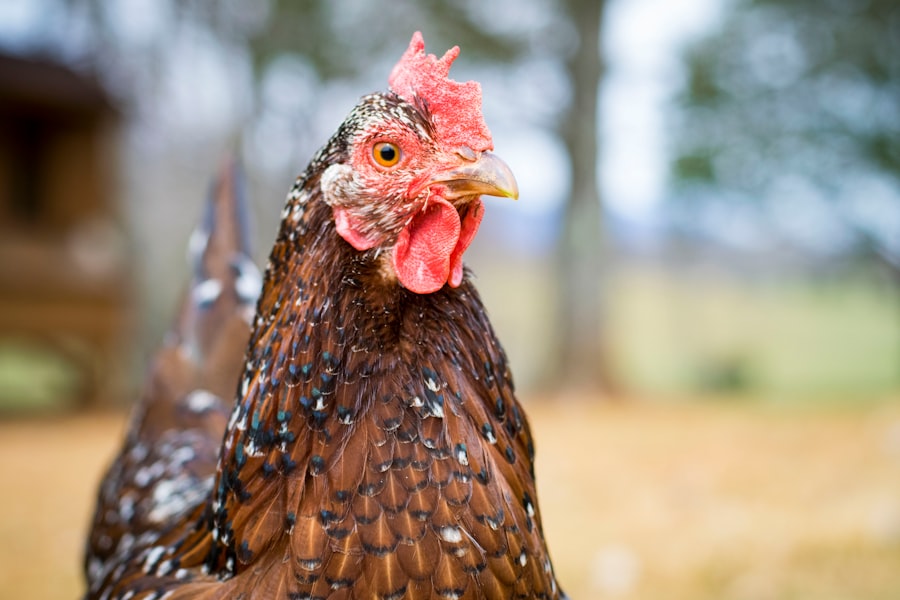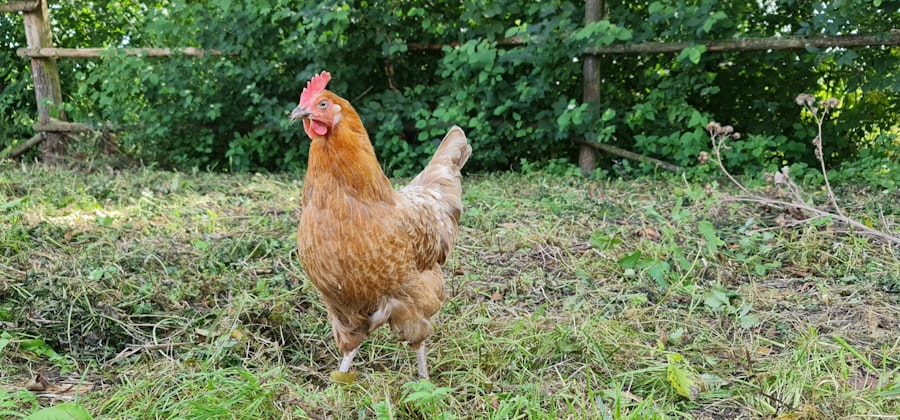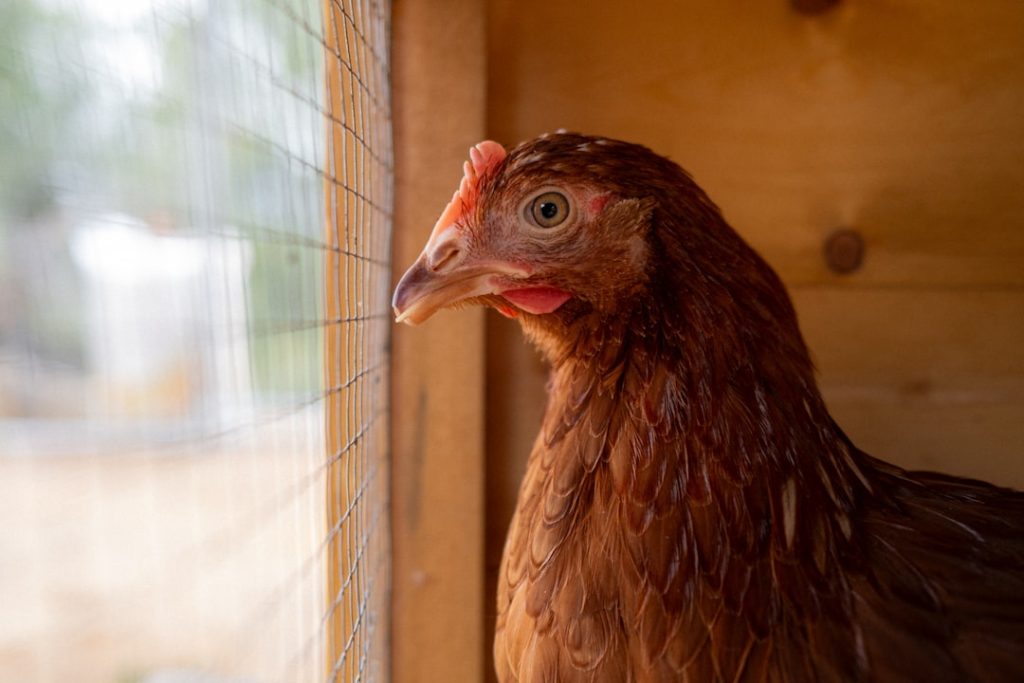Brown chickens exhibit a diverse range of plumage colors, from light tan to deep mahogany, with both solid and patterned variations. The genetics behind brown chicken plumage are complex and not fully understood, leading to ongoing research and debate among poultry experts. Some theories suggest that the brown coloration results from the eumelanin pigment, while others propose a combination of eumelanin and pheomelanin pigments.
These chickens are popular in backyard flocks due to their friendly temperament and consistent egg production. Brown chickens are often associated with traditional farming practices and are considered symbols of sustainability and self-sufficiency. Their eggs are valued for their rich, flavorful yolks, and their meat is known for its superior taste and texture.
The complexity of brown chicken genetics continues to intrigue researchers and breeders alike, contributing to the ongoing fascination with these birds in the poultry community. Further studies are needed to fully elucidate the genetic mechanisms responsible for the various shades and patterns observed in brown chicken plumage.
Table of Contents
Key Takeaways
- Brown chickens are not a specific breed, but rather a color variation that can be found in many different chicken breeds.
- The genetics of chicken plumage are complex, with multiple genes contributing to the color and pattern of feathers.
- When identifying different chicken breeds, consider characteristics such as comb type, feather color, and body shape.
- Factors to consider when choosing chicken breeds include climate, space availability, and egg or meat production.
- To care for brown chickens, provide a balanced diet, clean living conditions, and regular health check-ups.
Understanding the Genetics of Chicken Plumage
The Role of Eumelanin and Pheomelanin
In the case of brown chickens, the coloration of their plumage is primarily determined by the presence of eumelanin and pheomelanin pigments. Eumelanin is responsible for producing black and brown colors, while pheomelanin produces red and yellow colors. The interaction between these two pigments, as well as other genetic factors, results in the wide range of brown shades and patterns seen in different chicken breeds.
Additional Genetic Factors
In addition to eumelanin and pheomelanin, other genetic factors such as feather structure and melanosome distribution also play a role in determining the color and pattern of a chicken’s plumage. The distribution of melanin granules within the feather shaft can affect the intensity and depth of color, while the structure of the feather itself can influence how light is reflected off the surface, creating different visual effects.
Why Understanding Chicken Plumage Genetics Matters
Understanding the genetics behind chicken plumage is not only important for breeders looking to produce specific color variations, but also for poultry enthusiasts who want to learn more about the fascinating world of genetics and its impact on the natural beauty of these remarkable birds.
Tips for Identifying Different Chicken Breeds

Identifying different chicken breeds can be a fun and rewarding experience for poultry enthusiasts. With hundreds of chicken breeds to choose from, each with its own unique characteristics and traits, it can be challenging to distinguish one breed from another. However, there are several key features to look for when identifying different chicken breeds.
One of the most obvious features to consider is plumage color and pattern. Some breeds, such as the Rhode Island Red and the New Hampshire, are known for their rich mahogany plumage, while others, like the Barred Plymouth Rock and the Silver Laced Wyandotte, have striking black and white patterns. In addition to plumage color and pattern, other physical characteristics such as comb type, leg color, and body shape can also help in identifying different chicken breeds.
For example, the Leghorn breed is known for its distinctive white earlobes and large single comb, while the Cochin breed has feathered legs and a round, fluffy appearance. It’s also important to consider behavioral traits when identifying chicken breeds, as some breeds are known for their docile nature, while others are more active and independent. By paying attention to these key features, poultry enthusiasts can become adept at identifying different chicken breeds and gain a deeper appreciation for the diversity and beauty of these remarkable birds.
Factors to Consider When Choosing Chicken Breeds
When choosing chicken breeds for your backyard flock, there are several important factors to consider to ensure that you select the right breeds for your specific needs and preferences. One of the first factors to consider is egg production. If you are primarily interested in raising chickens for their eggs, you may want to choose breeds known for their high egg-laying capabilities, such as the Leghorn or the Australorp.
On the other hand, if you are more interested in raising chickens for meat production, you may want to consider breeds with larger body sizes and superior meat quality, such as the Cornish or the Jersey Giant. Another important factor to consider when choosing chicken breeds is climate suitability. Some breeds are better suited to cold climates, while others thrive in warmer environments.
It’s important to select breeds that are well adapted to your local climate to ensure their health and well-being. Additionally, considering space requirements is crucial when choosing chicken breeds. Some breeds are more suited to confinement and do well in smaller coop spaces, while others require more room to roam and forage.
By taking these factors into consideration, you can make informed decisions when choosing chicken breeds that will thrive in your specific environment and meet your individual needs.
How to Care for Brown Chickens
Caring for brown chickens involves providing them with proper nutrition, housing, and healthcare to ensure their health and well-being. When it comes to nutrition, it’s important to provide brown chickens with a balanced diet that includes high-quality poultry feed, fresh water, and access to grit for digestion. Additionally, offering supplemental treats such as fruits, vegetables, and mealworms can provide added nutrients and enrichment for brown chickens.
Housing is another important aspect of caring for brown chickens. Providing a secure coop with adequate ventilation, nesting boxes, and roosting perches will help keep brown chickens safe and comfortable. Regular health checks and preventative care are essential for maintaining the well-being of brown chickens.
This includes monitoring for signs of illness or injury, administering vaccinations as needed, and practicing good biosecurity measures to prevent the spread of disease. Additionally, providing regular opportunities for exercise and free-ranging can help keep brown chickens healthy and active. By providing proper nutrition, housing, and healthcare, poultry enthusiasts can ensure that their brown chickens lead happy and healthy lives.
Common Health Issues in Brown Chickens

Common Health Issues in Brown Chickens
Some common health issues in brown chickens include respiratory infections, parasites such as mites and lice, reproductive disorders, and nutritional deficiencies. Respiratory infections can be caused by bacteria or viruses and may result in symptoms such as coughing, sneezing, and difficulty breathing.
Causes and Symptoms of Health Issues
Parasites such as mites and lice can cause irritation and discomfort for brown chickens, leading to feather loss and skin damage if left untreated. Reproductive disorders can also affect brown chickens, leading to issues such as egg binding or reproductive tumors. Nutritional deficiencies can arise from an imbalanced diet or poor-quality feed, resulting in symptoms such as poor growth, reduced egg production, or weakened immune function.
Prevention and Care
To prevent these common health issues in brown chickens, it’s important to provide them with a clean and comfortable living environment, a balanced diet with proper nutrition, regular health checks, and access to veterinary care when needed.
The Benefits of Raising Brown Chickens
Raising brown chickens offers a wide range of benefits for poultry enthusiasts and homesteaders alike. One of the primary benefits of raising brown chickens is their reliable egg production. Many brown chicken breeds are known for their excellent egg-laying capabilities, providing a consistent supply of fresh eggs for household consumption or sale.
In addition to egg production, brown chickens also offer the benefit of natural pest control. Chickens are natural foragers and will eagerly consume insects such as beetles, grubs, and ticks, helping to keep pest populations in check around the home or garden. Another benefit of raising brown chickens is their dual-purpose nature.
Many brown chicken breeds are well-suited for both egg production and meat quality, making them a versatile choice for small-scale homesteaders looking to raise their own food. Additionally, brown chickens are known for their friendly disposition and social nature, making them enjoyable companions for both adults and children alike. By raising brown chickens, poultry enthusiasts can enjoy the many benefits they offer while adding beauty and charm to their backyard flock.
If you’re struggling with keeping brown chickens, you may want to consider upgrading your chicken coop. Poultry Wizard has a helpful article on the best chicken coops for keeping your flock happy and healthy. Check out their recommendations for the Producers Pride Sentinel Chicken Coop here. Upgrading your coop could be the solution to your brown chicken troubles.
FAQs
What causes chickens to turn brown?
Chickens can turn brown due to a variety of reasons, including genetics, diet, and environmental factors. Some chicken breeds are naturally brown, while others may change color due to their diet or exposure to sunlight.
What can I feed my chickens to prevent them from turning brown?
To maintain the natural color of your chickens, it’s important to provide them with a balanced diet that includes high-quality poultry feed, fresh fruits and vegetables, and access to clean water. Avoid feeding them foods that may contain artificial colorants or additives.
How does sunlight affect the color of chickens?
Exposure to sunlight can cause the feathers of chickens to fade or change color over time. This is a natural process and is more common in chickens with lighter colored feathers. Providing shaded areas in the chicken coop can help minimize the effects of sunlight on their feathers.
Are there specific breeds of chickens that are naturally brown?
Yes, there are several chicken breeds that are known for their brown feathers, such as Rhode Island Reds, Plymouth Rocks, and Orpingtons. These breeds are popular for their egg-laying abilities and are often chosen for their brown eggs.
Can I use any products to change the color of my chickens?
It is not recommended to use any products to change the color of chickens. Altering the natural color of chickens can be harmful to their health and well-being. It’s best to focus on providing them with a healthy diet and proper care to maintain their natural color.
Meet Walter, the feathered-friend fanatic of Florida! Nestled in the sunshine state, Walter struts through life with his feathered companions, clucking his way to happiness. With a coop that’s fancier than a five-star hotel, he’s the Don Juan of the chicken world. When he’s not teaching his hens to do the cha-cha, you’ll find him in a heated debate with his prized rooster, Sir Clucks-a-Lot. Walter’s poultry passion is no yolk; he’s the sunny-side-up guy you never knew you needed in your flock of friends!







